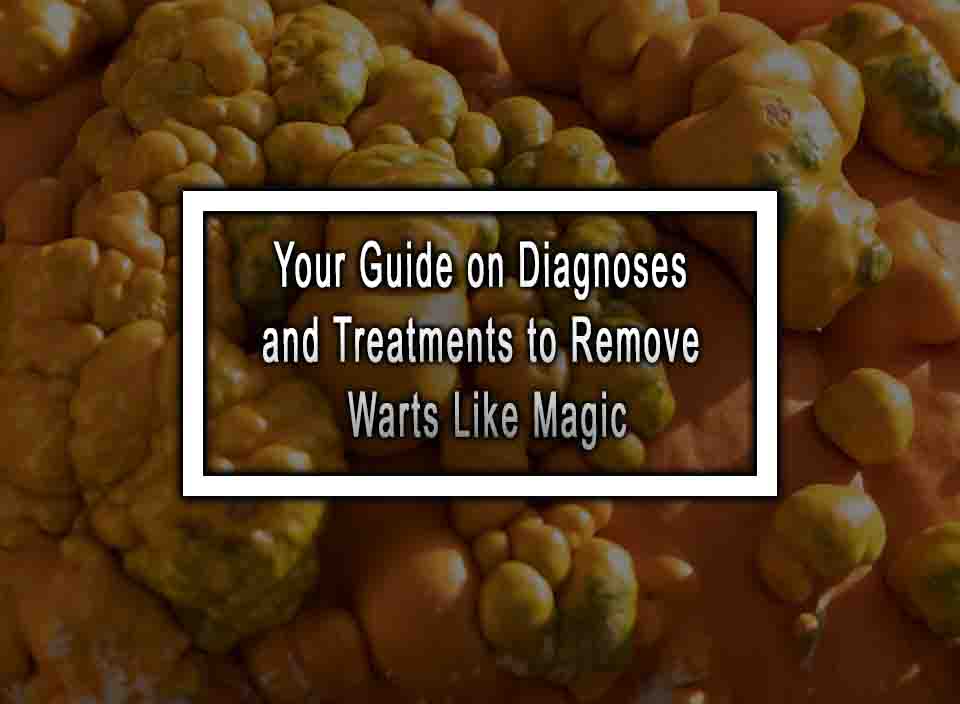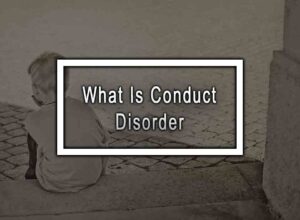Zap Those Zits: How to Identify and Remove Warts Effectively
Getting warts can be a frustrating skin issue for many individuals. These small, grainy skin growths are caused by the human papillomavirus (HPV) and can appear on any part of the body. Warts are generally harmless but they can be bothersome and unsightly. Fortunately, there are several ways to tackle these tenacious bumps. Whether you’re considering DIY remedies or professional treatments, it’s essential to understand your options. In this ultimate guide, we will explore the most effective methods to help you regain smooth, clear skin.
Diagnosis
Before diving into treatments, it’s crucial to ensure that you’re dealing with a wart. Here are some common types of warts:
1. Common Warts (Verruca Vulgaris)
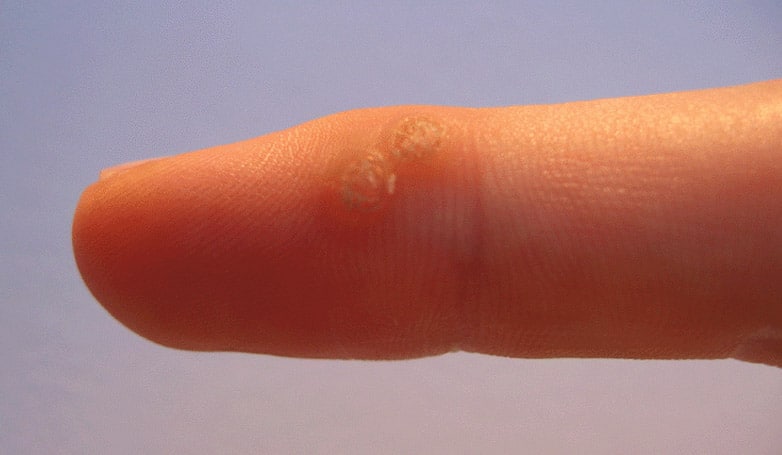
Common warts, scientifically known as Verruca vulgaris, are skin growths caused by the human papillomavirus (HPV). These noncancerous lesions can be identified by the rough texture and appearance of small, fleshy bumps, typically on the hands and fingers. Common warts are contagious and can be spread through direct contact with the virus, whether from person-to-person or via contact with a contaminated surface. Though often harmless and sometimes resolving on their own, these growths can cause discomfort and embarrassment. The diagnosis of common warts is generally a straightforward process, often based on a visual inspection by a healthcare provider. If removal is desired or necessary, medical professionals can diagnose and remove warts, excluding specific treatment procedures in this context.
2. Plantar Warts

Plantar warts are noncancerous skin growths, typically found on the soles of the feet due to the human papillomavirus (HPV). These warts can be recognized by their location as well as their distinct appearance, which includes a rough, grainy texture and a well-defined boundary. Often, they are marked by a pattern of tiny black dots, which are small, clotted blood vessels. Plantar warts might cause discomfort or pain, particularly when standing or walking. While plantar warts can sometimes go away on their own, a medical professional can diagnose them with certainty. A healthcare provider may examine the lesion and possibly take a small tissue sample to accurately identify and diagnose the wart.
3. Flat Warts
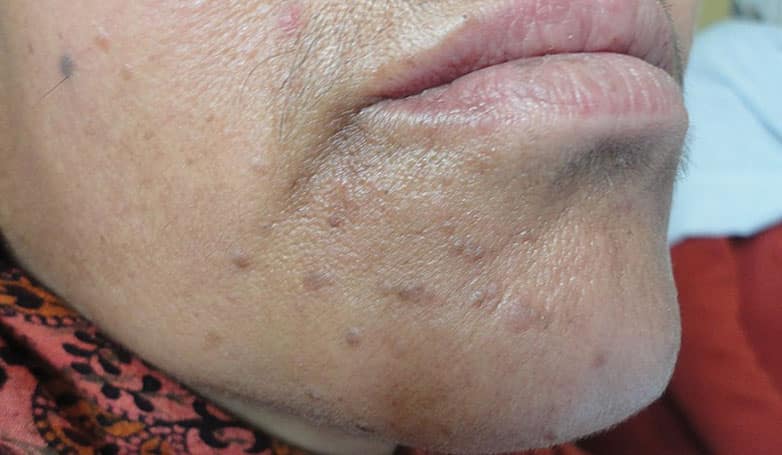
Flat warts are a type of small, smooth, elevated lesions that can appear on the skin. They are also known as verruca plana and often manifest as flesh-colored, yellow, or brownish patches. Typically smaller and flatter than other warts, they tend to grow in large numbers and can be found on the face, neck, hands, wrists, or knees. Flat warts are caused by certain strains of the human papillomavirus (HPV) and are spread through direct contact with the virus. Diagnosing flat warts usually involves a physical examination by a healthcare provider, and in some cases, a biopsy may be performed to confirm the diagnosis. Although benign, many individuals seek to remove warts for aesthetic or comfort reasons.
4. Filiform Warts
Filiform warts are a distinctive type of wart usually found on the face, especially around the eyelids, lips, or nose. They appear as thread-like projections, giving them a spiky appearance that can be cosmetically worrying for those affected. These benign growths are caused by the human papillomavirus (HPV) and are considered highly contagious. They often affect children and adults with weakened immune systems. While filiform warts are not cancerous, their location can cause discomfort or embarrassment, leading many to seek ways to remove warts. The texture of these warts is usually softer compared to other wart types, and they can rapidly increase in size and number if not addressed.
5. Periungual Warts
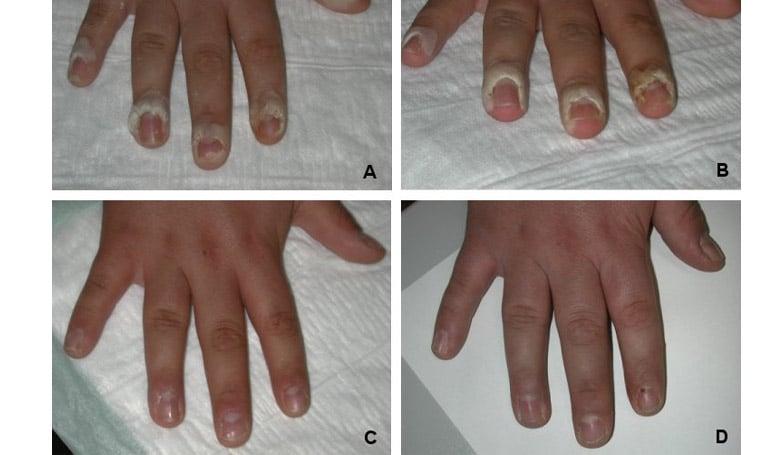
Periungual warts are unsightly and potentially painful warts that form around the nails of fingers and toes. These growths can disrupt normal nail growth and can be particularly stubborn to remove. Treatments for warts in the periungual area often encompass topical applications of salicylic acid, cryotherapy (freezing), or other medical interventions, such as laser therapy and surgical removal. It’s important to consult a healthcare provider for the most effective approach to removing warts in this sensitive area, as over-the-counter methods might not always be suitable. Addressing periungual warts promptly can help prevent their spread and minimize potential complications that can affect nail health and overall cosmetic appearance.
Treatments
Once you’ve identified that you have a wart, it’s time to consider treatments. Here’s a rundown of your options:
- Salicylic Acid: Salicylic acid is a topical application that works by peeling away layers of a wart over time. It is commonly available in various over-the-counter products for wart treatment. Patients seeking to remove warts apply the solution regularly, allowing it to dissolve wart tissue gradually.
- Cryotherapy: Cryotherapy involves freezing warts with liquid nitrogen, causing them to fall off. This method can be effective for many types of warts and is usually performed by a healthcare provider. Multiple sessions may be required to fully remove warts using this technique.
- Cantharidin: Administered by a doctor, cantharidin is a substance applied to the wart that causes it to blister and eventually detach from the skin. This chemical can remove warts by promoting the separation of the wart from the surrounding skin.
- Excision: Performing an excision means surgically cutting out the wart. Local anesthesia is usually applied before a healthcare provider uses a scalpel to remove warts. This method provides immediate results, although it may leave a scar.
- Laser Treatment: Laser treatment targets and destroys wart tissue, offering an alternative when other treatments fail to remove warts. This procedure should be undertaken by a qualified medical professional, and several sessions may be needed to achieve desired results.
- Immune-System Boosters: Immune-system boosters, such as imiquimod cream, aim to encourage the body’s immune system to attack and remove warts. This prescription-based treatment may not have immediate effects but can be effective over time, particularly for stubborn warts.
- Home Remedies: While less scientifically proven, some people turn to home remedies to remove warts. These might include applying apple cider vinegar, duct tape, or garlic to the wart. The effectiveness of these methods can vary, and they might not be endorsed by all medical professionals.
Winning the War on Warts: Smooth Victories Ahead!
Understanding the enemy is half the battle, and with the knowledge of how to diagnose and treat warts, you’re well on your way to victory. Remember, patience and persistence are key, as some warts may take time and multiple treatments to fully disappear. However, with the right strategies in place, you can look forward to reclaiming your smooth, clear skin.
Warts FAQs
Here are the most common questions about warts:
1. Do warts have roots?
No, warts do not have “roots.” They grow in the top layer of skin, the epidermis. When they seem to reappear after removal, it is typically because the underlying virus was not entirely eradicated.
2. Can children and adults get warts?
Yes, both children and adults can get warts, though they are more common in children due to their less mature immune systems and frequent minor skin abrasions.
3. Can warts turn into cancer?
Typically, the types of HPV that cause common skin warts do not lead to cancer. However, there are other types of HPV that are not associated with warts and can lead to skin or mucosal cancers.
4. Are warts a sign of a weak immune system?
Not necessarily. While having warts can indicate that your immune system hasn’t cleared the virus, many people with healthy immune systems get warts as well.
5. Will warts go away on their own?
Yes, many warts will go away without treatment over time as the immune system fights off the virus. However, this process can take months or even years.

